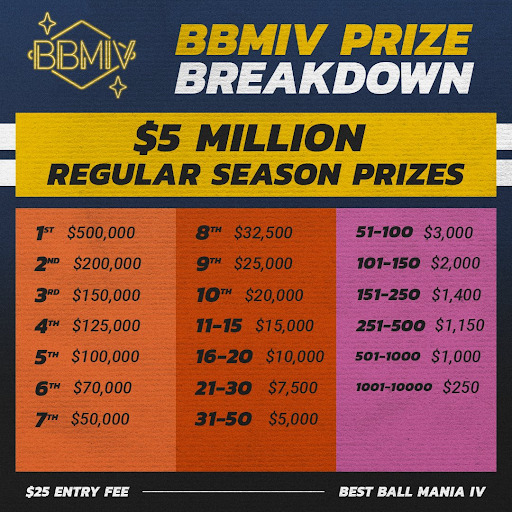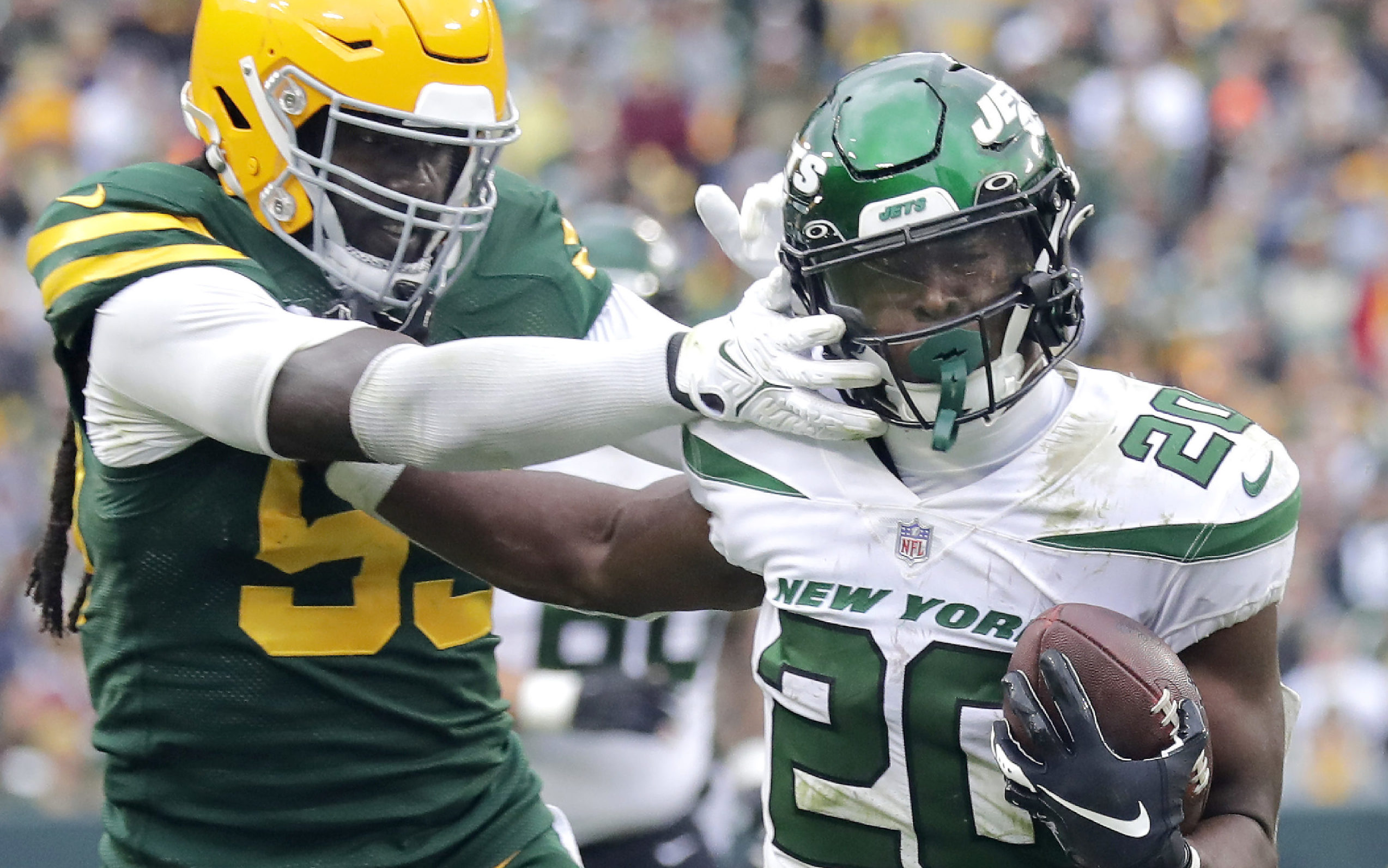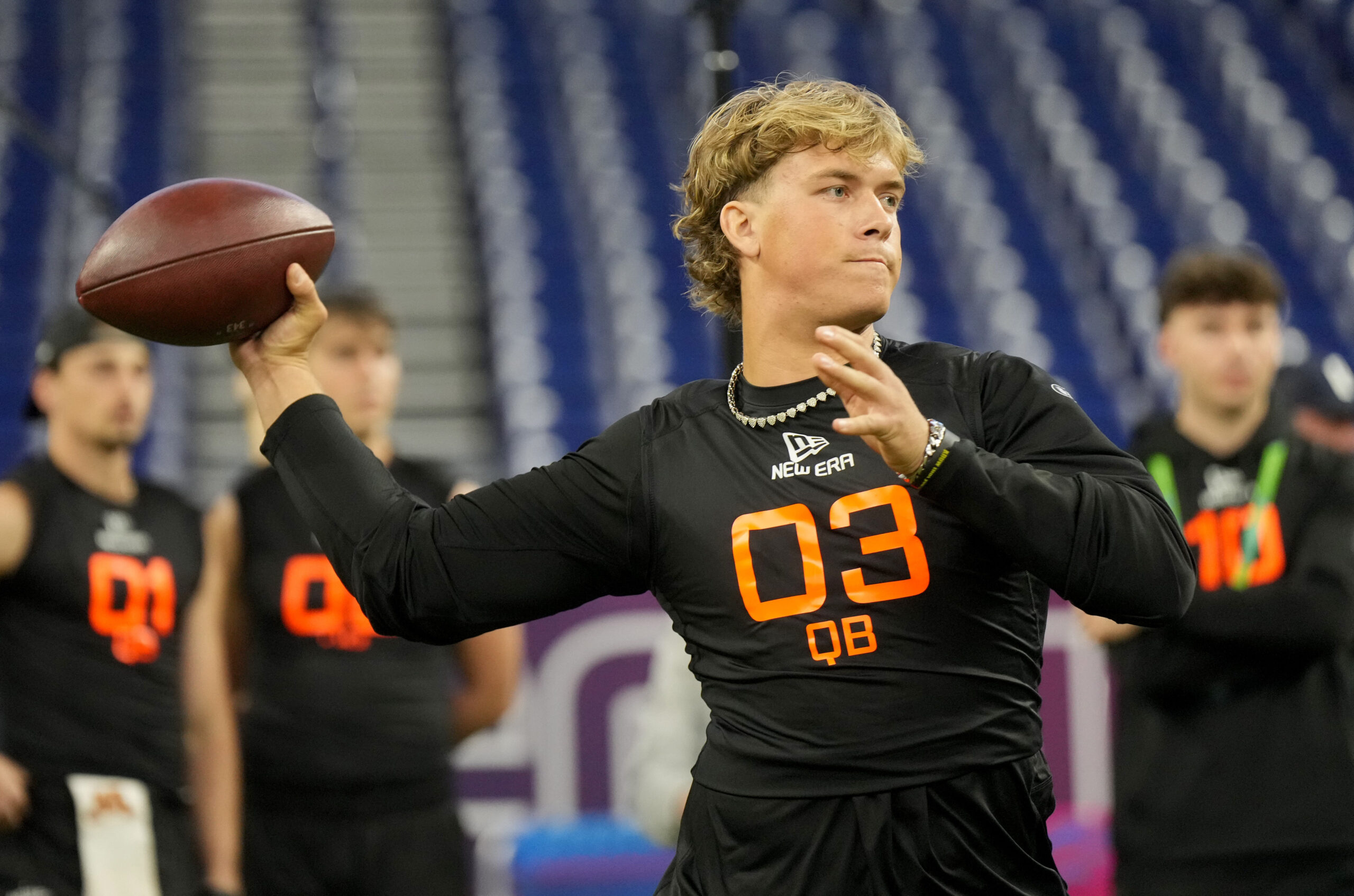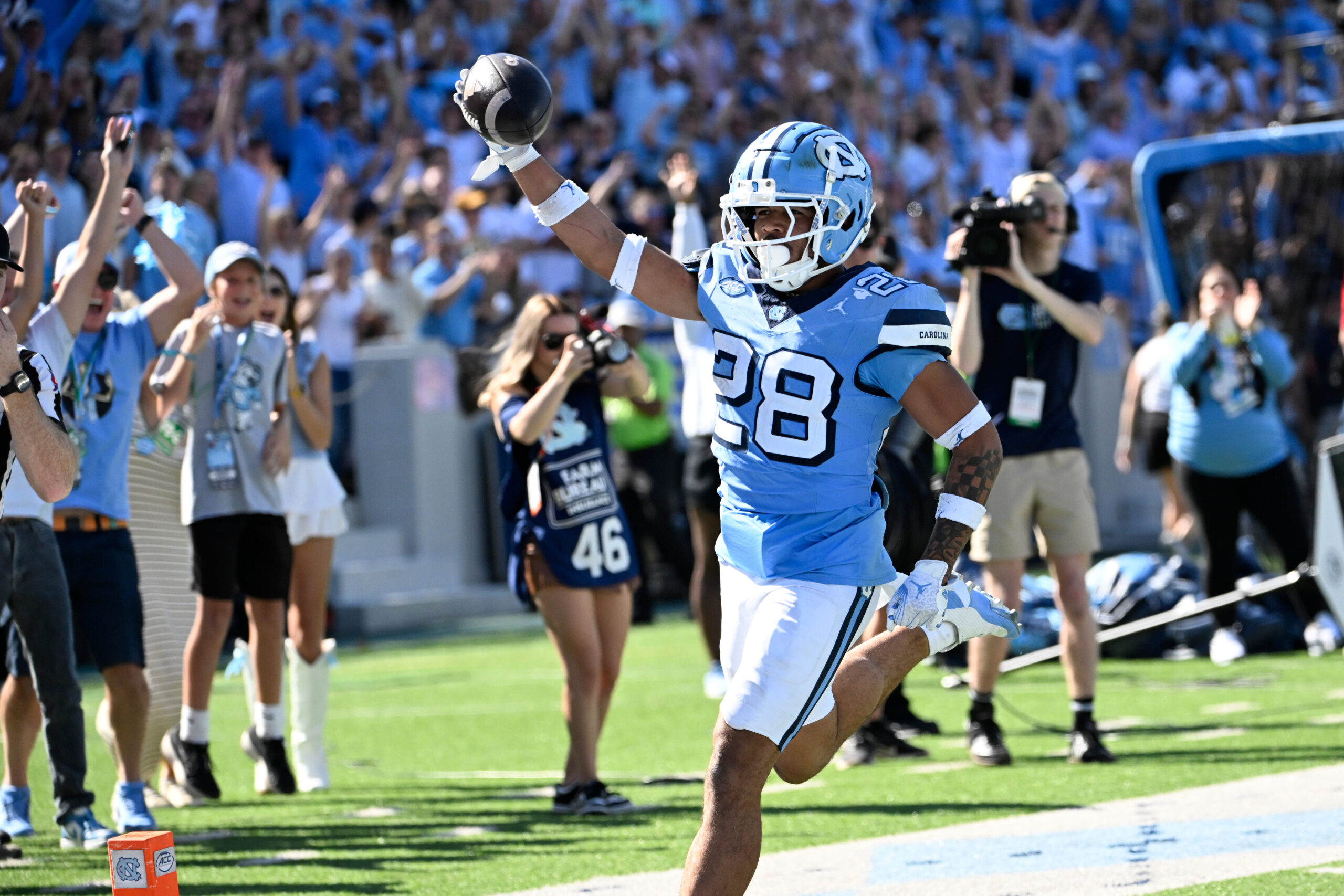Analysis
5/19/23
6 min read
2023 Best Ball: How to Strategize for Underdog's BBMIV Tournament

The dominant discourse around Underdog’s $15 million prize tournament often centers on maximizing correlation during Week 17. Yet, a third of the tournament’s prizes this year come from elite performances during the regular season.
While one’s focus should never lose sight of the playoff week prizes, there are strategies drafters can implement to play for both sets of prizes and others that strictly help regular season scoring potential.
Formulating Strategies
Regular Season Prizes
Underdog’s Best Ball Mania Four (BBMIV) has 677,376 entrants, but only the top 10,000 (1.48 percent) will earn a regular season prize. If the average drafter enters the tournament 150 times, on average, they will have two entries in this prize bucket. But, given the top-heavy nature of the regular season prize distribution, drafters should not just aim for 99th percentile teams (which will return $250); they should aim for 99.999th percentile teams (which will produce at least $50,000) to whatever degree possible.
With the obvious "draft good teams to win more money" out of the way, here are some strategies to increase the likelihood of earning the top prizes.
ADP Value, Macro vs. Micro Environments
BBMIV will have 56,448 drafts. The Average Draft Position (ADP) on the Underdog platform will collect data from recent BBMIV drafts and other tournaments. While ADPs will move throughout the summer, assuming one can consistently beat the market is a fool’s errand. Instead, embracing humility will be rewarded with ADP value.
Because every draft consists of just 12 individuals, players will likely fall significantly past their ADPs in some drafts but not every draft. Under almost any circumstance, drafting a player falling beyond their ADP should be prioritized.
Dalvin Cook is a relevant counter-example. He has fallen from the 5-6 turn to the end of the sixth round and should continue to fall as speculation spreads about his potential release. For a “falling knife” player such as Cook, it's not advisable to draft them, even when they fall slightly past their ADP.
In traditional circumstances, selecting players past their ADPs will give drafters an edge in the macro-BBMIV environment. For instance, Brandin Cooks has an ADP of 84, and barring an injury or unpredictable camp report, Cooks should stay around the 7-8 turn throughout the summer.
Any team that can draft Cooks at pick 100+ will benefit. Drafting Cooks allows one’s roster to “add” a 7-8 turn value at a ninth-round opportunity cost. Put differently, drafting Cooks later than the average team with Cooks has more draft capital to allocate elsewhere. The team that drafted Cooks later has leverage over the typical Cooks team, and their team will project for more points during the regular season.
Repeatedly drafting the ADP values unique to one’s 12-person draft room (their micro-environment) will compound these benefits. Making repeated optimal choices will produce teams that project for more regular season points.
[bc_video video_id="6326640849112" account_id="6312875271001" player_id="default" embed="in-page" padding_top="56%" autoplay="" min_width="0px" playsinline="playsinline" picture_in_picture="" language_detection="" application_id="" max_width="680px" mute="muted" width="100%" height="100%" aspect_ratio="16:9" sizing="responsive" ]
Downside Risk, Depth Charts
Because BBMIV takes place across the entire summer, it's crucial to contextualize each draft. Early drafts may benefit from less-efficient ADP values, but late drafts will benefit from the information. Making uncertain selections now when there is the opportunity to make the same selection in July and August with more information is a losing proposition.
For instance, drafters should avoid running backs on unclear depth charts. The Cincinnati Bengals’ Chase Brown fits these criteria. While there is a chance the Bengals release Joe Mixon, it remains unknown. The Bengals' competition for RB2 contains Brown (a fifth-round rookie), Chris Evans and Trayveon Williams.
While Evans and Williams go undrafted, Brown, with a 167 ADP, goes at the end of the 14th round. If Brown wins the backup running back training camp battle, his ADP likely remains in the 14th round. However, if either Williams or Evans wins, Brown could go undrafted. A May or June selection of Brown, or any player fitting this archetype, at their current ADP carries substantial risk.
Just as drafting players past their ADP gives you an edge on the other 677,375 entries, drafting players that are reasonably only going to drop or remain at their current ADP can be devastating to otherwise properly constructed teams.
Correlation
Correlation is the most essential element of hitting a meaningful ceiling of outcomes. Because the regular season lasts 14 weeks (or 13 games and a bye week), no singular week or matchup is important. So, focusing on correlating each team will increase each team’s volatility, meaning each team is more likely to reach the coveted 99.99th percentile outcome and earn five figures.
For example, a team that drafts Justin Jefferson with the first pick, T.J. Hockenson at the 4-5 turn and Jordan Addison at the 6-7 turn will benefit from taking Kirk Cousins at the 8-9 turn. All four of these players benefit from an elite Vikings passing attack. Limiting the number of assumptions needed for any team to succeed is essential.
Correlation is a drafter’s best tool to simplify the equation by making two or three correlated “bets” on specific offenses instead of drafting 18 uncorrelated players.
While attaching three or four skill players to a quarterback may lower the weekly ceiling — an important consideration because of the money available in week 17 — drafters should attach at least two skill players to their quarterbacks. That simultaneously increases season-long points potential and weekly ceiling. Though, if ADP values line up, a third-skill player can help.
 Handling Slow-Starting Players
Handling Slow-Starting Players
If all of BBMIV’s prize money were conveyed in Week 17, like in previous years, players like Jameson Williams (suspended for the first six games), Breece Hall and Javonte Williams (the latter two coming off knee injuries) would be undervalued by ADP. Their Week 17 production would project to be greater than their early season average weekly production.
But, with 33 percent of the prizes requiring strong early-season production, these players need special consideration. Drafting Hall at the 2-3 turn will lower one’s expected regular-season production if his recovery suffers setbacks. Despite going in the eighth round, Javonte Williams’s knee recovery seems to be a significant obstacle toward playing at full strength early in the season.
So, teams with Javonte Williams will almost certainly have to make up ground elsewhere if they want to chase the regular season prize money. Similarly, Jameson Williams’ suspension for the first six weeks makes him a fascinating selection in BBMIV.
While his weekly ceiling during the fantasy playoffs remains stronger than other options in the ninth round, knowingly taking zero points from a ninth-round pick for 46 percent of his regular-season games pushes Williams teams much further from regular season prizes.
For players like this, it is advisable to be overweight in all of Underdog’s other tournaments, like the Puppy and Dalmatian (which do not have regular season prizes), relative to one’s exposure in BBMIV.
Follow The 33rd Team Podcast Network on Spotify and Apple Podcasts.


 Handling Slow-Starting Players
Handling Slow-Starting Players




